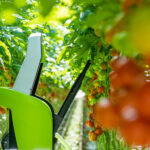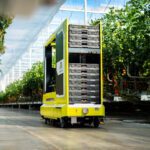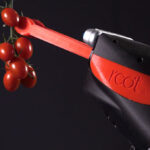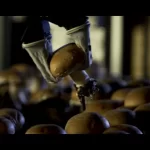
Money Pours Into Greenhouse Automation
No farmer is surprised anymore by the almost daily announcements of robotic ag innovations. We are way past the novelty of GPS driven tractors. In fields, orchards, vineyards and greenhouses programable or autonomous equipment is already doing everything from seeding to harvesting. No matter what the crop, robots have arrived to do the work. This is especially true in greenhouses as grower after grower buys or leases robotic equipment.
Less obvious, behind the scenes, is the restructuring of the robotics industry as money pours into greenhouse automation. The flow is visible in three currents: (a) Investments/Acquisitions by Existing Greenhouse Suppliers (b) Investments by Growers (c) Vertical Farming.
1/ Investments/Acquisitions by Existing Greenhouse Suppliers:
Dutch companies have supplied the international greenhouse industry for decades. Prominent among these is Priva. Priva is a high-tech company in the climate control field, specializing in smart building automation, greenhouse technology & indoor farming.

In late 2021, Priva introduced Kompano, a robot that can move around a greenhouse independently. The robot is designed to de-leaf tomato plants 24-7. The machine was a joint venture with a Belgian company, Octinion, that was simultaneously developing a strawberry harvester. The two firms have since merged to form Octiva. Expectations are high that Octiva will become a greenhouse automation powerhouse.
Equally well known in greenhouse agriculture is the Dutch firm, Ridder. Ridder manufacturers electric motors that control greenhouse climate by opening & closing vents and screens. The motors provide constant control of vent and screen positions, regardless of conditions, load or type of greenhouse.

In 2022, Ridder invested in Metomotion, an Israeli company which invented a cherry tomato harvester. The machine moves around the greenhouse autonomously and has been successfully deployed to greenhouse operations in Holland and Great Britain. Ridder is now bringing the machine to North America.
In a twist on this theme, the automated irrigation firm, Netafim, recently purchased the Dutch greenhouse manufacturer, Gakon. Netafim is owned by Orbia, a large multinational with sales last year of almost $10 billion (USD). This vertical integration and concentration of ownership is only possible as money pours into greenhouse automation.
(b) Investments by Growers

More common in the United States than in Canada are growers large enough to develop their own greenhouse robots or buy a robot manufacturer. An American example is AppHarvest which operates 4 farms in Kentucky with 165 acres under glass. They grow tomatoes, salad greens, strawberries and cucumbers. Recently, AppHarvest bought RootAI, a robotics developer that has pioneered robot harvesting of cherry tomatoes and other produce. The Rootai sensors can “see” individual fruits and pluck them from even cluttered stems and vines.
Farther north, Little Leaf Farms has developed it’s own systems to fully automate the production of lettuce. From seeding through harvesting and packaging their baby lettuce is untouched. Their customers are close to the farm and they expect sales this year to reach $100 mil, (USD).

In Canada, Whitecrest Mushrooms, a grower near Woodstock, Ontario worked with the Vineland Research and Innovation Centre to develop a robot to harvest mushrooms. The result was so successful that Mycionics, a manufacturer of mushroom harvest robots, was the spinoff. Mycionics plans to export their mushroom harvest robot world wide.
3/ Vertical Farming
Vertical farming can best be understood as factory food production. Plants are grown indoors on racks using artificial light. Highly automated systems do everything from seeding to harvesting. With the racks as high as 15 rows vertical, the output per sq. meter of land is huge compared to traditional field cultivation.
One of the largest vertical farms in the world is located in the Emirate of Dubai. Bustanica hosts 31,000 sq. metres of rack space using technology supplied by Crop One, an American ag-tech firm.
The operation has experienced serious technical issues around it’s energy consumption. Only 1000 sq. meters of its racks are currently in production. But, because the project is backed in part by both Emirates Airlines and the government of Dubai, the farm faces no risk of shutdown. Deep pocketed investors provide that level of security.
Conclusion
The pace of change in the ag robotics industry can only increase as investment lubricates the entry of new players to the field and the consolidation of existing ones. To see more of the players in greenhouse automation, visit our Greenhouse Automation Directory
